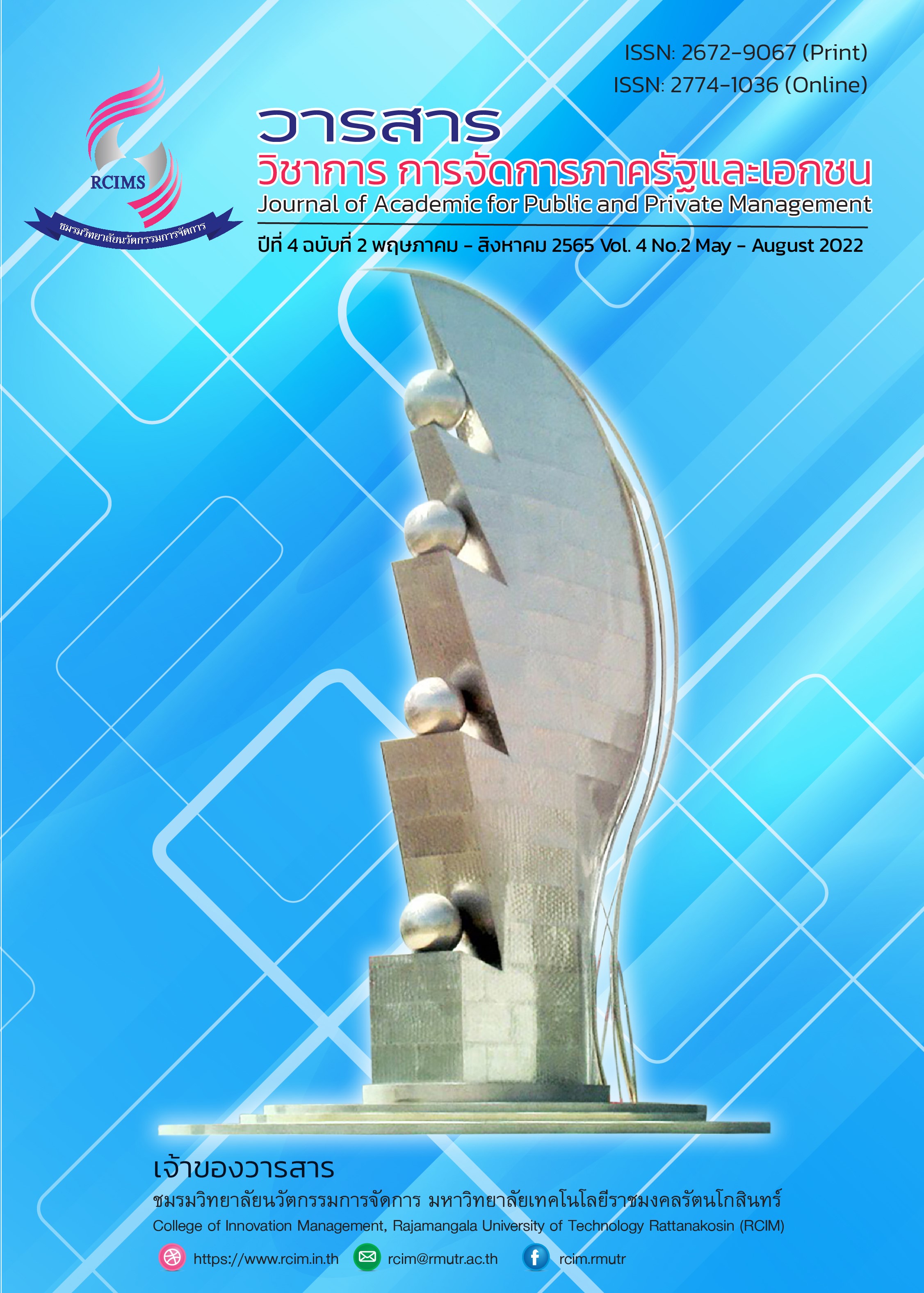ปัจจัยที่ส่งผลต่อการสร้างภูมิคุ้มกันและป้องกันยาเสพติดในสถานศึกษาแบบมีส่วนร่วม
Main Article Content
บทคัดย่อ
บทความนี้มีวัตถุประสงค์เพื่อสร้างสมการพยากรณ์การสร้างภูมิคุ้มกันและป้องกันยาเสพติด รูปแบบการวิจัยเป็นการวิจัยเชิงปริมาณ ใช้แนวคิดการป้องกันและแก้ไขปัญหาแบบมีส่วนร่วมเป็นกรอบการวิจัย พื้นที่วิจัย คือ เทศบาลเมืองนครปฐม จังหวัดนครปฐม กลุ่มตัวอย่าง คือ ประชาชนในเทศบาลเมืองนครปฐม จังหวัดนครปฐม จำนวน 372 คน ใช้วิธีคัดเลือกแบบแบบตามความสะดวก เครื่องมือที่ใช้ในการวิจัยมี 1 ชนิด คือ แบบสอบถามการป้องกันและแก้ไขปัญหายาเสพติดในสถานศึกษาแบบมีส่วนร่วม วิเคราะห์ข้อมูลโดยใช้สถิติพื้นฐาน ได้แก่ ค่าความถี่ ค่าร้อยละ ค่าเฉลี่ย และส่วนเบี่ยงเบนมาตรฐาน สถิติอ้างอิง ได้แก่ วิเคราะห์ถดถอยพหุคูณด้วยวิธีการ Stepwise ผลการวิจัยพบว่า ตัวแปรพยากรณ์ที่สามารถทำนายการสร้างภูมิคุ้มกันและป้องกันยาเสพติดมี 5 ปัจจัย ปัจจัยด้าน E: มีส่วนร่วมในการประเมินผล รองลงมา คือ ปัจจัยด้าน C: มีส่วนร่วมในการปฏิบัติการ ปัจจัยด้าน D: มีส่วนร่วมในผลประโยชน์ ปัจจัยด้าน A: มีส่วนร่วมในการวางแผน และปัจจัยด้าน B: มีส่วนร่วมในการตัดสินใจ ตามลำดับ โดยมี
ค่าสัมประสิทธิ์การถดถอยในรูปของคะแนนมาตรฐาน (Beta) เท่ากับ 0.384, 0.270, 0.285, 0.169
และ -0.139 ตามลำดับ
ข้อค้นพบจากงานวิจัยนี้ คือ สามารถสมการพยากรณ์การสร้างภูมิคุ้มกันและป้องกันยาเสพติดในรูปคะแนนดิบและคะแนนมาตรฐานได้ ดังนี้
Y’ = 0.096 + 0.403E + 0.242C + 0.295D + 0.184A - 0.135B
Z’ = 0.384E + 0.270C + 0.285D + 0.169A - 0.139B
Article Details

อนุญาตภายใต้เงื่อนไข Creative Commons Attribution-NonCommercial-NoDerivatives 4.0 International License.
เอกสารอ้างอิง
เทศบาลเมืองนครปฐม. (2565). ประชากรในเขตเทศบาลเมืองนครปฐม. สืบค้นเมื่อ 26 กรกฎาคม 2565, จาก http://www.npt.go.th/index.php/welcome/detail/510/menu
Bureau of Drug Prevention and Development. (2015). Conclusion of the progress of the implementation of the indicators goals according to the strategic plan of the land force over drugs. Nonthaburi: Bureau of Drug Prevention and Development.
Cohen, J. M. , & Uphoff, N. (1977). Rural development participation: Concepts and measures for project design, implementation and evaluation. Ithaca, NY: Cornell University, Rural Development Committee.
Cronbach, L. J. (1951). Coefficient alpha and the internal structure of tests. Psychometrika, 16, 297-334.
Haines, S. J., Gross, J. M., Blue-Banning, M., Francis, G. L., & Turnbull, A. P. (2015). Fostering family–school and community–school partnerships in inclusive schools: Using practice as a guide. Research and Practice for Persons with Severe Disabilities, 40(3), 227-239.
Krejcie, Robert V., & Daryle, W. Morgan. (1970). Determining Sampling Size for Research Activities. Journal of Education and Psychological Measurement, 10(11), 308.
Likert, Rensis. (1967). The Method of Constructing and Attitude Scale. In Reading in Fishbeic, M (Ed.). Attitude Theory and Measurement. New York: Wiley & Son.
Office of the Narcotics Control Board. (2017). Operational Guidelines to Drive the Civil-State Plan for Building a Stable Community/ Village to Safe Drugs. Bangkok: Office of the Narcotics Control Board.
Ross, J. A., & Gray, P. (2006). School leadership and student achievement: The mediating effects of teacher beliefs. Canadian Journal of Education/Revue canadienne de l'éducation, 29(3),798-822.
Sanders, M. G., & Harvey, A. (2002). Beyond the school walls: A case study of principal leadership for school-community collaboration. Teachers college record, 104(7), 1345-1368.
Secretary-General, U. N. (2018). Implementation of the mandates of the United Nations Crime Prevention and Criminal Justice Programme, with particular reference to the technical cooperation activities of the United Nations Office on Drugs and Crime. Report of the Secretary-General.
Thapa, A., & Cohen, J. (2017). School climate community scale: report on construct validity and internal consistency. School community journal, 7(2), 303-320.


